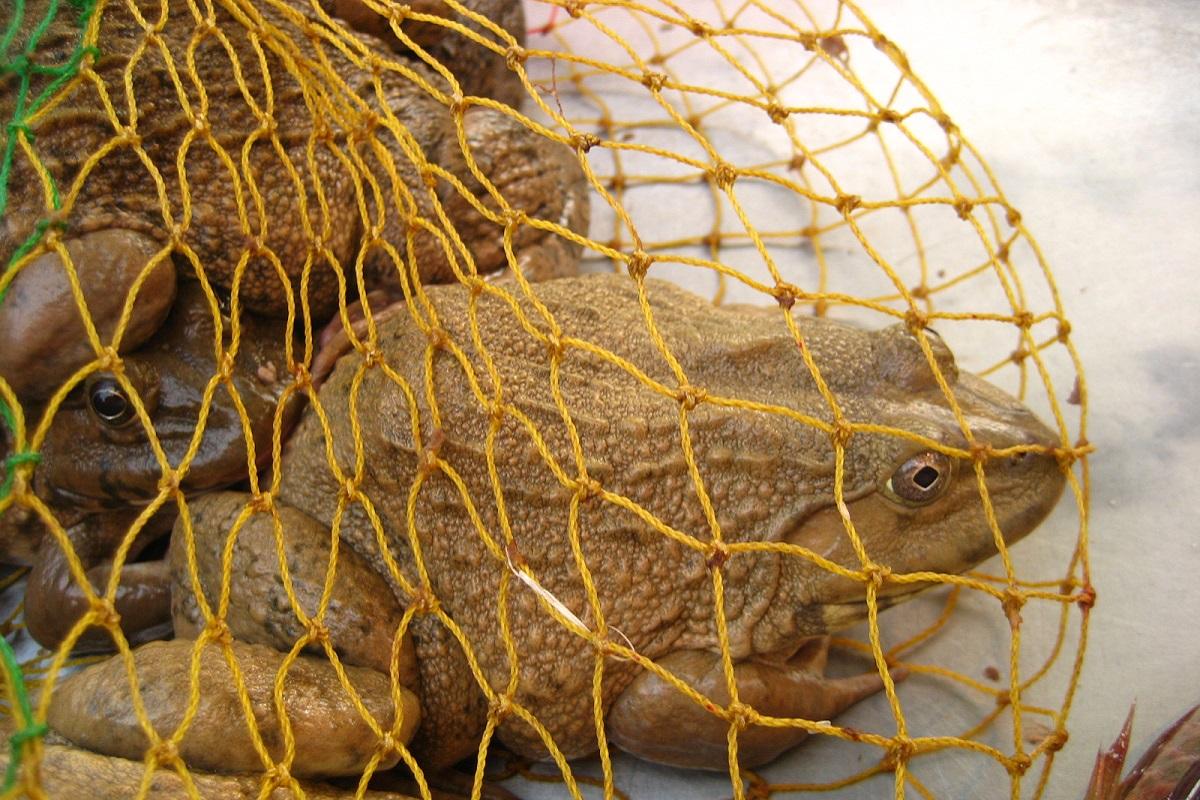When talking about frog legs most people connect them with French gourmet restaurants or with exotic holiday destinations in Southeast Asia, but they are also found in Berlin supermarkets. The annual consumption of approximately 500 million frogs worldwide can have a dramatic impact on ecosystems. Frogs are not only important food sources for many birds and mammals; they also consume a lot of articulated animals. As a result, they contribute significantly to the control of harmful insects in agriculture or even of pathogens. Although there are many reports of frogfarms, especially from Asia, it seems unlikely that these farms can cover the global need for frogs' legs. In order to check whether the meat available in Berlin's supermarkets comes from wild-living frogs or from farms, a team of researchers from the Museum für Naturkunde has now applied an unusual method.
To find out where and how the frogs grew up, Carolin Dittrich and her coauthors examined the composition of the stable isotopes of nitrogen, carbon and oxygen in the muscles and bones of the frog's legs. Many elements, including the ones tested, naturally come with different weights (isotopes) and thus different chemical properties. The composition of these isotopes can reveal the origin and mode of life of individuals because the isotope composition varies at different locations on earth, and some rare, i.e. heavy isotopes accumulate throughout the food chain. For example, the more carnivorous the diet, the greater the amount of nitrogen in the tissue. Carolin Dittrich explains "we can find out what an animal has been feeding on. And even the variety of food sources is recorded in the signature of the isotopes ".
With the help of the isotope composition, the researchers found out that the frogs' legs were very likely to originate from the indicated countries, but only partially grew up on farms. About half of the animals grew under natural conditions. Genetic studies have also shown that the labeling of the packages was not always correct. The researchers hope that their method can become a tool for nature conservation and customs in order to check the origin of frogs' legs and thus minimize the trade in animals from wild populations. As Mark-Oliver Rödel of the Museum für Naturkunde summed up, "the hunting pressure could be taken from natural populations and therefore contributing to the stability of ecosystems and ultimately help the respective populations."
Publikation:
C. Dittrich, U. Struck & M.-O. Rödel 2017. Stable isotope analyses – A method to distinguish intensively farmed from wild frogs. Ecology and Evolution doi: 10.1002/ece3.2878
